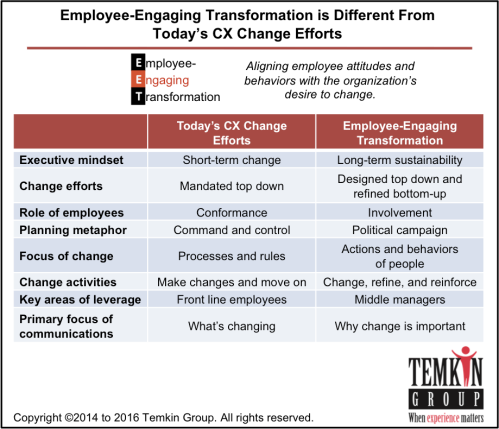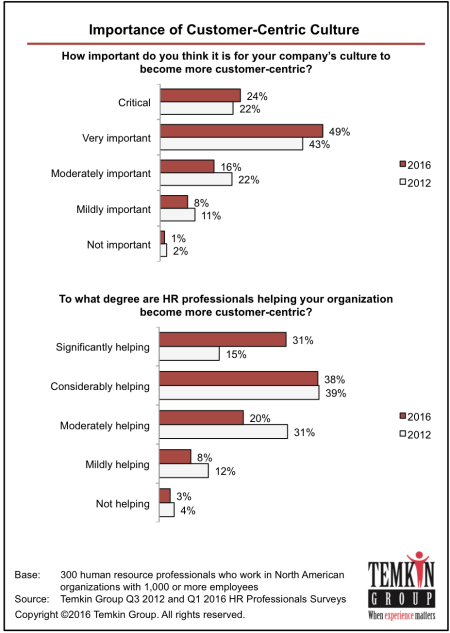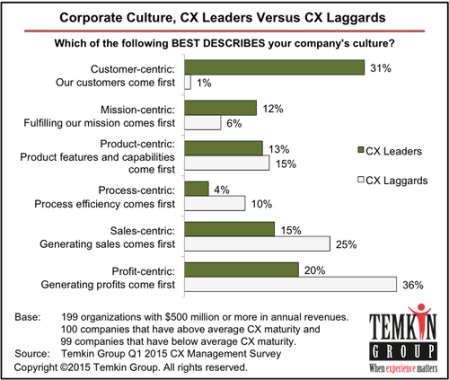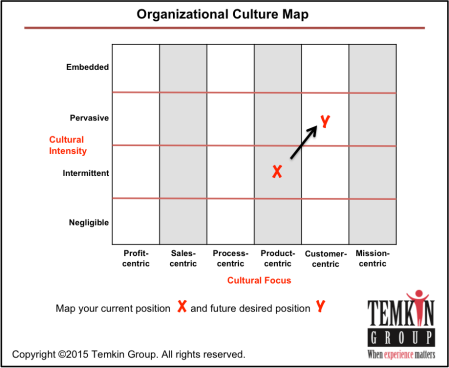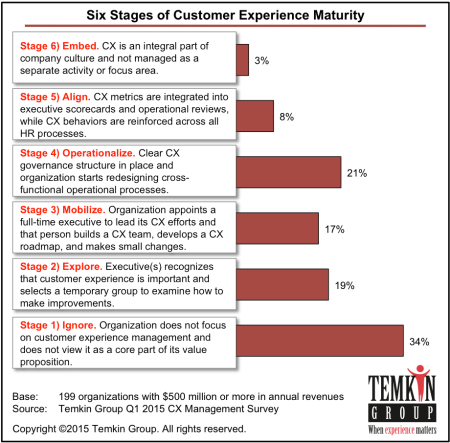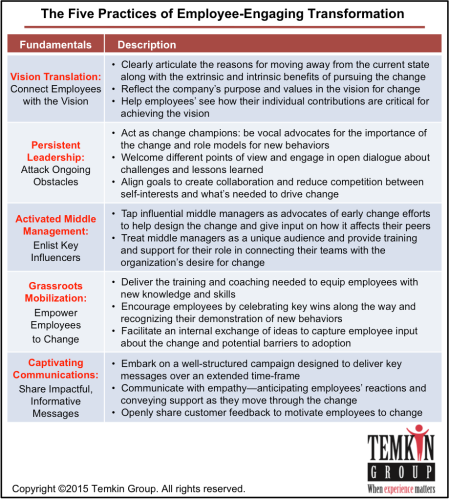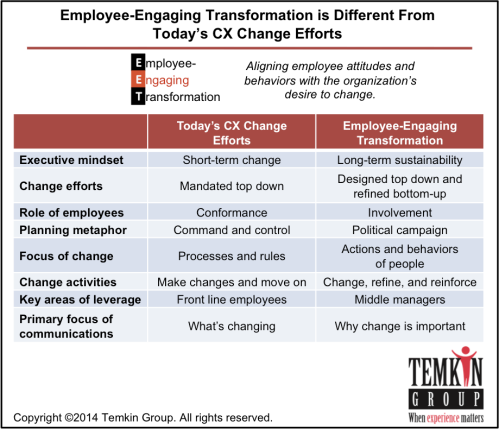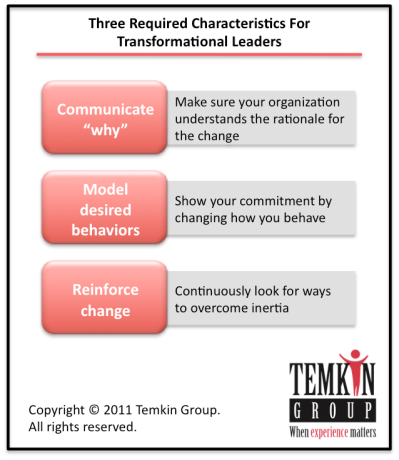In a letter to all Microsoft employees called Starting FY15 – Bold Ambition & Our Core, CEO Satya Nadella established a mandate and vision for significant change across the technology behemoth.
Microsoft has great assets, but it has not kept up with changes in how people use technology. The Redmond giant was becoming increasingly less relevant in a world where digital technology is becoming more relevant.
Microsoft has needed to change for a while. There’s a saying that the best time to plant a tree is ten years ago and the second best time is right now. Nadella has made it clear that Microsoft’s time for change is right now.
My take: First of all, it’s hard to talk about any large-scale culture change without recommending that people review our model called Employee-Engaging Transformation, which is built on five practices: Vision Translation, Persistent Leadership, Activated Middle Management, Grassroots Mobilization and Captivating Communications.

We work with many of the world’s leading technology companies, so I could go on and on about what changes are necessary at Microsoft. But I’d rather examine broader lessons from Nadella’s letter. Here are some excerpts that I thought were particularly valuable to discuss:
“...in order to accelerate our innovation, we must rediscover our soul – our unique core“
Successful companies almost always start with a strong raison d’être, but it can get lost as the company grows and the world changes (see my post on Starbucks). Without a “soul,” companies drift along as employees across the organization start operating in a disconnected way. This is where the brand comes in. Companies need to constantly refresh their brands and make sure that the brand drives decisions across the organization (see my post on Walmart).
“More recently, we have described ourselves as a “devices and services” company. .. At our core, Microsoft is the productivity and platform company for the mobile-first and cloud-first world. We will reinvent productivity to empower every person and every organization on the planet to do more and achieve more.”
Our research shows that employees are more productive and engaged when they are inspired by their organization’s mission. Which one of these statements do you think is more inspiring: “We are the devices and service company” or “We will reinvent productivity to empower every person and every organization on the planet to do more and achieve more.”
“We will create more natural human-computing interfaces that empower all individuals.”
This is a comment about technology, but its also points to a broader commentary about making things easy to use. We have entered into a world where people have more options, more distraction, and less patience. Every organization needs to relentlessly focus on making their products, services, and processes easier for customers to use.
“Obsessing over our customers is everybody’s job. I’m looking to the engineering teams to build the experiences our customers love.“
What’s not to love about this excerpt. My customer experience manifesto (and Temkin Group, for that matter) is built on a fundamental belief that sustaining great customer experience is not about applying a veneer, but about building competencies across the entire organization that create great experiences for customers (see our four CX core competencies). Also, it’s interesting that Nadella used the word “love.” Experiences are made up of three component (functional, accessible, and emotional) and our Temkin Experience Ratings show that companies are weakest at driving the emotional component. To get people to “love” your company, I suggest applying what we call People-Centric Experience Design.
“I am committed to making Microsoft the best place for smart, curious, ambitious people to do their best work.”
One of the Six Laws of Customer Experience is that unengaged employees can’t create engaged customers. Any company looking to improve how it interacts with customers almost certainly needs to focus on its employees.
“We will be more effective in predicting and understanding what our customers need and more nimble in adjusting to information we get from the market.”
How companies use customer insights is changing rapidly. Technologies such as text analytics and predictive analytics are helping companies tap into more comprehensive and ongoing insights, rather than relying on periodic customer surveys. Ultimately, companies will need to reinvent their operating frameworks so that they can adjust more frequently to take advantage of these rapidly-flowing insights.
“Nothing is off the table in how we think about shifting our culture to deliver on this core strategy.”
This type of statement only works if it’s backed up by clear actions that employees can observe. These “symbols” of change need to be clear departures from how the company operated in the past, and can include reorganizations, firings/hirings/promotions/demotions, killing projects, accelerating projects, etc.). Don’t just say change is coming, demonstrate it (see the 3 characteristics of transformational leaders).
“We must each have the courage to transform as individuals. We must ask ourselves, what idea can I bring to life? What insight can I illuminate? What individual life could I change? What customer can I delight? What new skill could I learn? What team could I help build? What orthodoxy should I question?”
The notion of a personal challenge is a great way to help employees think about how they can be (and must be) a part of the change. But the questions won’t be too powerful if they are just statements in a letter from the CEO. Use these questions as part of discussions across the organization and embed them into leadership training and competency models.
The bottom line: Change isn’t easy, but Microsoft seems ready to give it a try.
 In a recent Fast Company article, This Is What Caused Uber’s Broken Company Culture, Uber was described as having a…
In a recent Fast Company article, This Is What Caused Uber’s Broken Company Culture, Uber was described as having a… I was very fortunate (as a die-hard Patriots fan) to have attended Super Bowl LI in Houston. It was the most amazing game that I’ve ever seen.
I was very fortunate (as a die-hard Patriots fan) to have attended Super Bowl LI in Houston. It was the most amazing game that I’ve ever seen.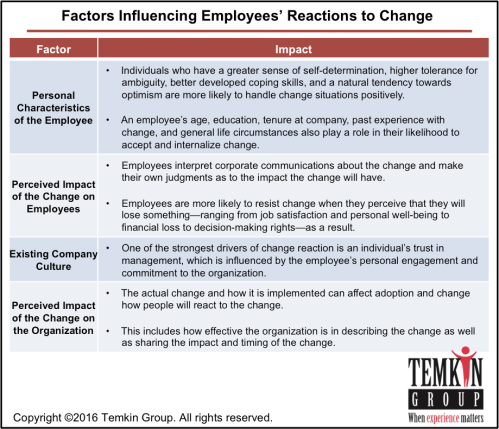
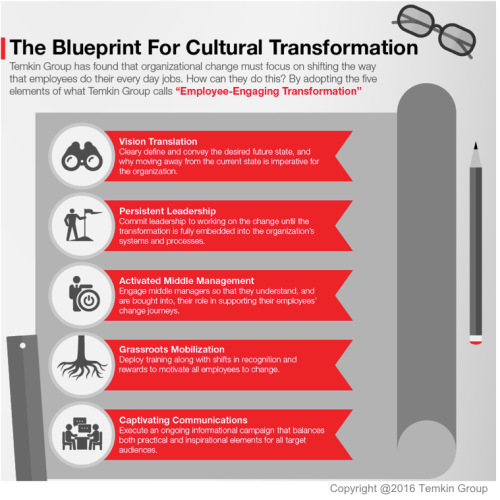 EET is different than typical top-down, autocratic attempts at culture change. Those efforts either just don’t work, or they create unintended negative elements in the culture.
EET is different than typical top-down, autocratic attempts at culture change. Those efforts either just don’t work, or they create unintended negative elements in the culture.